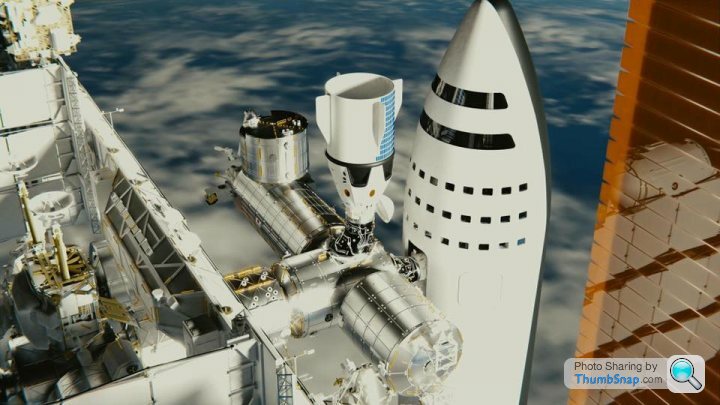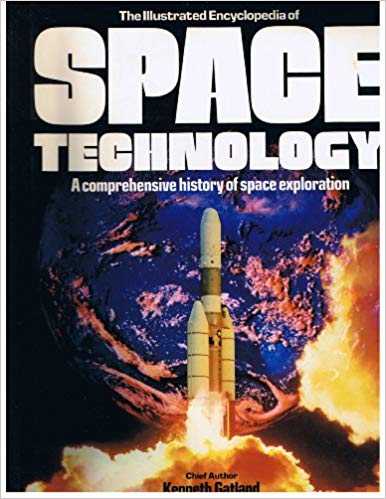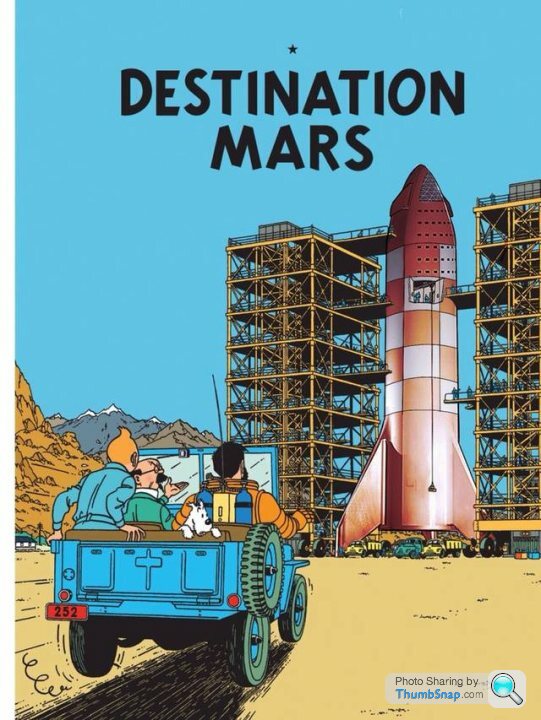SpaceX Tuesday...
Discussion
MartG said:
Interesting - don't know if it's ever been mentioned about BFR going to the ISS...it could probably carry as much payload up & down as a couple of years worth of normal resupply missions.

pointless though, as ISS only has a small capacity for storage based around its previous supply capability. To take advantage you would have to modify the ISS to carry more stores and waste storage.
jsf said:
MartG said:
pointless though, as ISS only has a small capacity for storage based around its previous supply capability. To take advantage you would have to modify the ISS to carry more stores and waste storage.
Meh old hat..
Project Orion was a study of a spacecraft intended to be directly propelled by a series of explosions of atomic bombs behind the craft (nuclear pulse propulsion). Early versions of this vehicle were proposed to take off from the ground with significant associated nuclear fallout; later versions were presented for use only in space. Six tests were launched.
The idea of rocket propulsion by combustion of explosive substance was first proposed by Russian explosives expert Nikolai Kibalchich in 1881, and in 1891 similar ideas were developed independently by German engineer Hermann Ganswindt. General proposals of nuclear propulsion were first made by Stanislaw Ulam in 1946, and preliminary calculations were made by F. Reines and Ulam in a Los Alamos memorandum dated 1947.[1] The actual project, initiated in 1958, was led by Ted Taylor at General Atomics and physicist Freeman Dyson, who at Taylor's request took a year away from the Institute for Advanced Study in Princeton to work on the project.
The Orion concept offered high thrust and high specific impulse, or propellant efficiency, at the same time. The unprecedented extreme power requirements for doing so would be met by nuclear explosions, of such power relative to the vehicle's mass as to be survived only by using external detonations without attempting to contain them in internal structures. As a qualitative comparison, traditional chemical rockets—such as the Saturn V that took the Apollo program to the Moon—produce high thrust with low specific impulse, whereas electric ion engines produce a small amount of thrust very efficiently. Orion would have offered performance greater than the most advanced conventional or nuclear rocket engines then under consideration. Supporters of Project Orion felt that it had potential for cheap interplanetary travel, but it lost political approval over concerns with fallout from its propulsion.[2]
The Partial Test Ban Treaty of 1963 is generally acknowledged to have ended the project. However, from Project Longshot to Project Daedalus, Mini-Mag Orion, and other proposals which reach engineering analysis at the level of considering thermal power dissipation, the principle of external nuclear pulse propulsion to maximize survivable power has remained common among serious concepts for interstellar flight without external power beaming and for very high-performance interplanetary flight. Such later proposals have tended to modify the basic principle by envisioning equipment driving detonation of much smaller fission or fusion pellets, although in contrast Project Orion's larger nuclear pulse units (nuclear bombs) were based on less speculative technology.
To Mars by A-Bomb: The Secret History of Project Orion was a 2003 BBC documentary film about the project.[3]
Ref
https://en.wikipedia.org/wiki/Project_Orion_(nucle...
Project Orion was a study of a spacecraft intended to be directly propelled by a series of explosions of atomic bombs behind the craft (nuclear pulse propulsion). Early versions of this vehicle were proposed to take off from the ground with significant associated nuclear fallout; later versions were presented for use only in space. Six tests were launched.
The idea of rocket propulsion by combustion of explosive substance was first proposed by Russian explosives expert Nikolai Kibalchich in 1881, and in 1891 similar ideas were developed independently by German engineer Hermann Ganswindt. General proposals of nuclear propulsion were first made by Stanislaw Ulam in 1946, and preliminary calculations were made by F. Reines and Ulam in a Los Alamos memorandum dated 1947.[1] The actual project, initiated in 1958, was led by Ted Taylor at General Atomics and physicist Freeman Dyson, who at Taylor's request took a year away from the Institute for Advanced Study in Princeton to work on the project.
The Orion concept offered high thrust and high specific impulse, or propellant efficiency, at the same time. The unprecedented extreme power requirements for doing so would be met by nuclear explosions, of such power relative to the vehicle's mass as to be survived only by using external detonations without attempting to contain them in internal structures. As a qualitative comparison, traditional chemical rockets—such as the Saturn V that took the Apollo program to the Moon—produce high thrust with low specific impulse, whereas electric ion engines produce a small amount of thrust very efficiently. Orion would have offered performance greater than the most advanced conventional or nuclear rocket engines then under consideration. Supporters of Project Orion felt that it had potential for cheap interplanetary travel, but it lost political approval over concerns with fallout from its propulsion.[2]
The Partial Test Ban Treaty of 1963 is generally acknowledged to have ended the project. However, from Project Longshot to Project Daedalus, Mini-Mag Orion, and other proposals which reach engineering analysis at the level of considering thermal power dissipation, the principle of external nuclear pulse propulsion to maximize survivable power has remained common among serious concepts for interstellar flight without external power beaming and for very high-performance interplanetary flight. Such later proposals have tended to modify the basic principle by envisioning equipment driving detonation of much smaller fission or fusion pellets, although in contrast Project Orion's larger nuclear pulse units (nuclear bombs) were based on less speculative technology.
To Mars by A-Bomb: The Secret History of Project Orion was a 2003 BBC documentary film about the project.[3]
Ref
https://en.wikipedia.org/wiki/Project_Orion_(nucle...
Kccv23highliftcam said:
Meh old hat..
Project Orion was a study of a spacecraft intended to be directly propelled by a series of explosions of atomic bombs behind the craft (nuclear pulse propulsion). Early versions of this vehicle were proposed to take off from the ground with significant associated nuclear fallout; later versions were presented for use only in space. Six tests were launched.
The idea of rocket propulsion by combustion of explosive substance was first proposed by Russian explosives expert Nikolai Kibalchich in 1881, and in 1891 similar ideas were developed independently by German engineer Hermann Ganswindt. General proposals of nuclear propulsion were first made by Stanislaw Ulam in 1946, and preliminary calculations were made by F. Reines and Ulam in a Los Alamos memorandum dated 1947.[1] The actual project, initiated in 1958, was led by Ted Taylor at General Atomics and physicist Freeman Dyson, who at Taylor's request took a year away from the Institute for Advanced Study in Princeton to work on the project.
The Orion concept offered high thrust and high specific impulse, or propellant efficiency, at the same time. The unprecedented extreme power requirements for doing so would be met by nuclear explosions, of such power relative to the vehicle's mass as to be survived only by using external detonations without attempting to contain them in internal structures. As a qualitative comparison, traditional chemical rockets—such as the Saturn V that took the Apollo program to the Moon—produce high thrust with low specific impulse, whereas electric ion engines produce a small amount of thrust very efficiently. Orion would have offered performance greater than the most advanced conventional or nuclear rocket engines then under consideration. Supporters of Project Orion felt that it had potential for cheap interplanetary travel, but it lost political approval over concerns with fallout from its propulsion.[2]
The Partial Test Ban Treaty of 1963 is generally acknowledged to have ended the project. However, from Project Longshot to Project Daedalus, Mini-Mag Orion, and other proposals which reach engineering analysis at the level of considering thermal power dissipation, the principle of external nuclear pulse propulsion to maximize survivable power has remained common among serious concepts for interstellar flight without external power beaming and for very high-performance interplanetary flight. Such later proposals have tended to modify the basic principle by envisioning equipment driving detonation of much smaller fission or fusion pellets, although in contrast Project Orion's larger nuclear pulse units (nuclear bombs) were based on less speculative technology.
To Mars by A-Bomb: The Secret History of Project Orion was a 2003 BBC documentary film about the project.[3]
Ref
https://en.wikipedia.org/wiki/Project_Orion_(nucle...
Orion fascinated me as a boy reading this, one of my favourite books growing upProject Orion was a study of a spacecraft intended to be directly propelled by a series of explosions of atomic bombs behind the craft (nuclear pulse propulsion). Early versions of this vehicle were proposed to take off from the ground with significant associated nuclear fallout; later versions were presented for use only in space. Six tests were launched.
The idea of rocket propulsion by combustion of explosive substance was first proposed by Russian explosives expert Nikolai Kibalchich in 1881, and in 1891 similar ideas were developed independently by German engineer Hermann Ganswindt. General proposals of nuclear propulsion were first made by Stanislaw Ulam in 1946, and preliminary calculations were made by F. Reines and Ulam in a Los Alamos memorandum dated 1947.[1] The actual project, initiated in 1958, was led by Ted Taylor at General Atomics and physicist Freeman Dyson, who at Taylor's request took a year away from the Institute for Advanced Study in Princeton to work on the project.
The Orion concept offered high thrust and high specific impulse, or propellant efficiency, at the same time. The unprecedented extreme power requirements for doing so would be met by nuclear explosions, of such power relative to the vehicle's mass as to be survived only by using external detonations without attempting to contain them in internal structures. As a qualitative comparison, traditional chemical rockets—such as the Saturn V that took the Apollo program to the Moon—produce high thrust with low specific impulse, whereas electric ion engines produce a small amount of thrust very efficiently. Orion would have offered performance greater than the most advanced conventional or nuclear rocket engines then under consideration. Supporters of Project Orion felt that it had potential for cheap interplanetary travel, but it lost political approval over concerns with fallout from its propulsion.[2]
The Partial Test Ban Treaty of 1963 is generally acknowledged to have ended the project. However, from Project Longshot to Project Daedalus, Mini-Mag Orion, and other proposals which reach engineering analysis at the level of considering thermal power dissipation, the principle of external nuclear pulse propulsion to maximize survivable power has remained common among serious concepts for interstellar flight without external power beaming and for very high-performance interplanetary flight. Such later proposals have tended to modify the basic principle by envisioning equipment driving detonation of much smaller fission or fusion pellets, although in contrast Project Orion's larger nuclear pulse units (nuclear bombs) were based on less speculative technology.
To Mars by A-Bomb: The Secret History of Project Orion was a 2003 BBC documentary film about the project.[3]
Ref
https://en.wikipedia.org/wiki/Project_Orion_(nucle...

https://www.amazon.com/Illustrated-Encyclopedia-Sp...
Eric Mc said:
Still have that book in my collection. I refer to it every now and then - even after 40 odd years.
Me too - in fact I bought a second copy when the spine on my first one split !In other news, another moonbound customer signs up with SpaceX
https://www.reuters.com/article/us-spacex-moon-isp...
Eric Mc said:
I never think the word "believe" sits well when it comes to matters of engineering and science.
It’s a word used by scientists when something is beloved to work in a certain way but the evidence still needs to be compleated. It is often used by those with good authority on a subject, it’s often based more on overal knowledge of a subject and a bit more than guess work. Toaster said:
Eric Mc said:
I never think the word "believe" sits well when it comes to matters of engineering and science.
It’s a word used by scientists when something is beloved to work in a certain way but the evidence still needs to be Kccv23highliftcam said:
Toaster said:
Eric Mc said:
I never think the word "believe" sits well when it comes to matters of engineering and science.
It’s a word used by scientists when something is beloved to work in a certain way but the evidence still needs to be 
garyhun said:
Kccv23highliftcam said:
Toaster said:
Eric Mc said:
I never think the word "believe" sits well when it comes to matters of engineering and science.
It’s a word used by scientists when something is beloved to work in a certain way but the evidence still needs to be 

Kccv23highliftcam said:
garyhun said:
Kccv23highliftcam said:
Toaster said:
Eric Mc said:
I never think the word "believe" sits well when it comes to matters of engineering and science.
It’s a word used by scientists when something is beloved to work in a certain way but the evidence still needs to be 

Gassing Station | Science! | Top of Page | What's New | My Stuff



